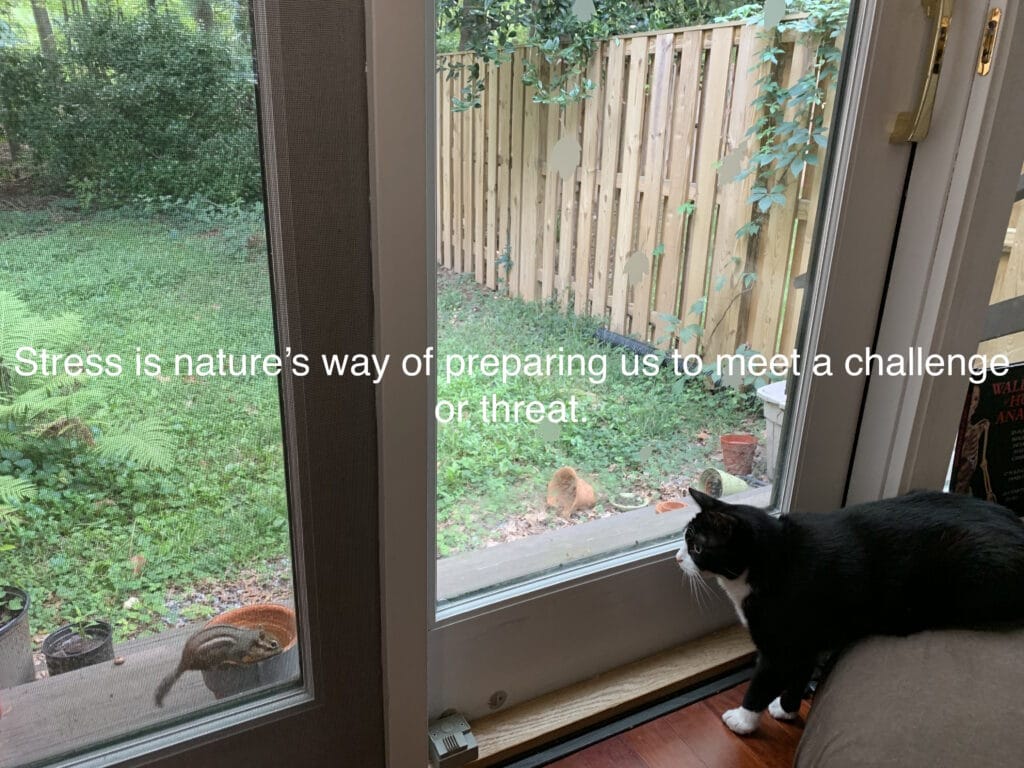
Stress and its effects are known to cause and aggravate illnesses such as heart disease, cancer, arthritis, diabetes, ulcers, asthma, eczema, sinusitis, headaches, neck and back pain, fatigue, anxiety susceptibility to colds and viruses…. and the list continues…
In the 1930s Dr Hans Selye defined the term stress as the “rate of wear and tear” on the body. That rate is affected by how we respond to the demands for adaptation and change inherent in life – commonly known as the fight-or-flight response. This response is nature’s way of preparing us to meet a challenge or threat. A serious threat, like encountering a predator or a mugger, stimulates a pattern of physiological reflexes to help you survive. Your heart rate and blood pressure increase, and your muscles tense in anticipation of a furious bout of either running or fighting. Blood flow is limited to your skin and digestive organs moved to your muscles, and clotting is activated so you can slow bleeding faster if injured. Your pupils open wide, and all your senses are sharpened. Adrenaline and other stress-related hormones are pumped into your bloodstream to provide you with extra energy. All these have one purpose – survival. In these scenarios, the resolution is fairly rapid, either running or fighting, and thereby metabolizing the adrenaline and related stress hormones. Your body would then lapse or collapse into a period of relaxation, a period of letdown in which it can focus on repair and healing.
In a typical day, the stressors usually more abstract than snakes and muggers. The demands, real or imagined, of schedules, deadlines, bills, children and relationships – with the virus, violence, wildfires, politics and pollution skulking in the background – these create a high ambient level of tension in our society. Many stressors can be neither fought nor fled and we must use different skills to cope with them, without succumbing to illness. Unless interrupted, the tension-states that arise in response to these insidious stressors, can lead a continual state of physiological alarm, leaving us literally stewing in our own stress hormones.
Dr Selye describes stress as occurring in 3 phases: the immediate state of alarm, resistance to the stress, and finally exhaustion. During the first two stages you become aware of and grapple with the stress. If the struggle persists for too long, exhaustion ensues, a high level of resistance cannot be maintained and systems begin to break down. In this stage you become increasingly vulnerable to illness.
One important means of reducing the taxing effects of stress is an effective relaxation technique. Physiological relaxation is in many ways the opposite of the fight-or-flight response to stress. It allows your body to replenish, repair and restore itself efficiently during periods of inactivity. Practiced regularly, relaxation interrupts the energy drain of chronic stress and conserves and builds energy that your body can use for healing.
Stress management is an important aspect of modern life and consists basically of two complementary strategies:
1) Changing what can be changed externally to reduce stressors and
2) Changing your attitudes and responses to situations that can’t be changed.
